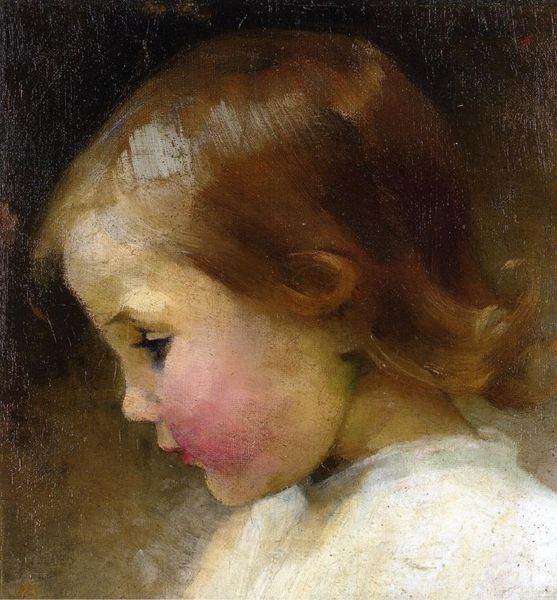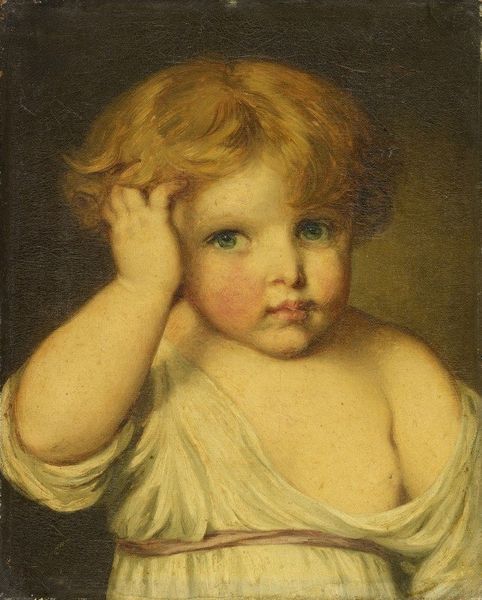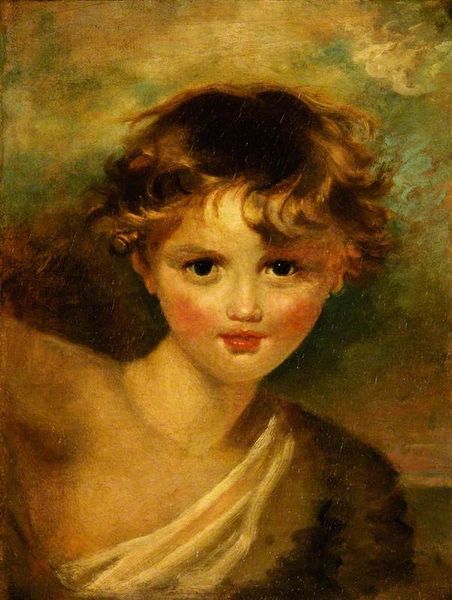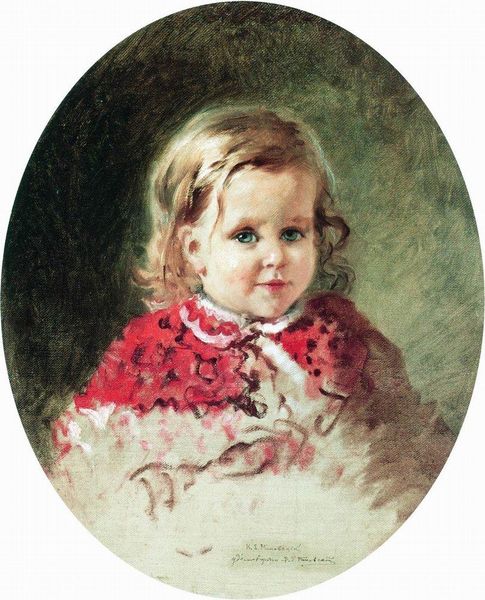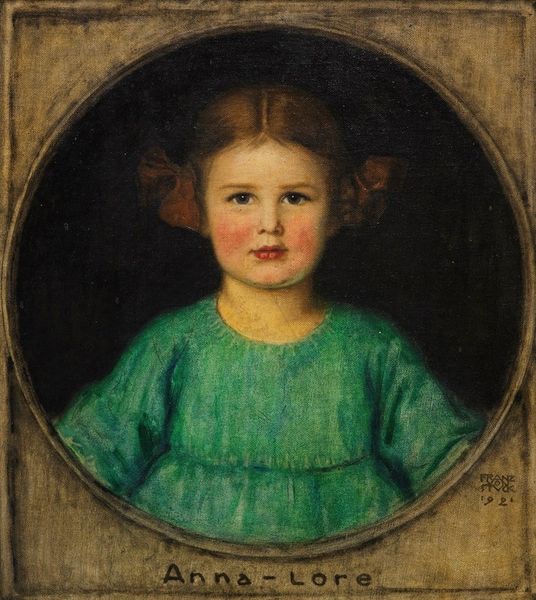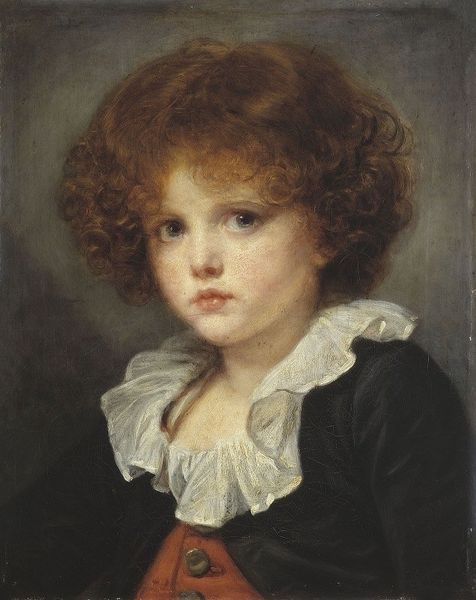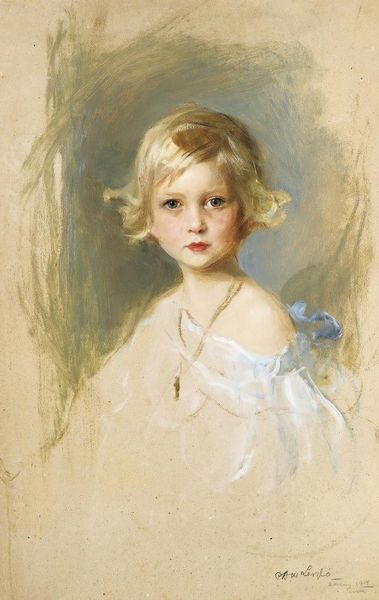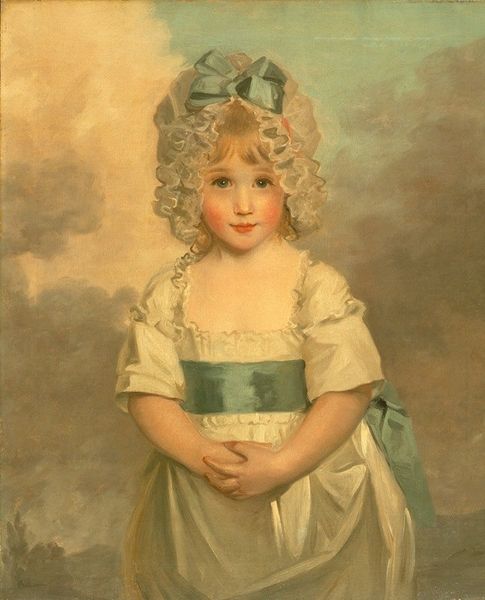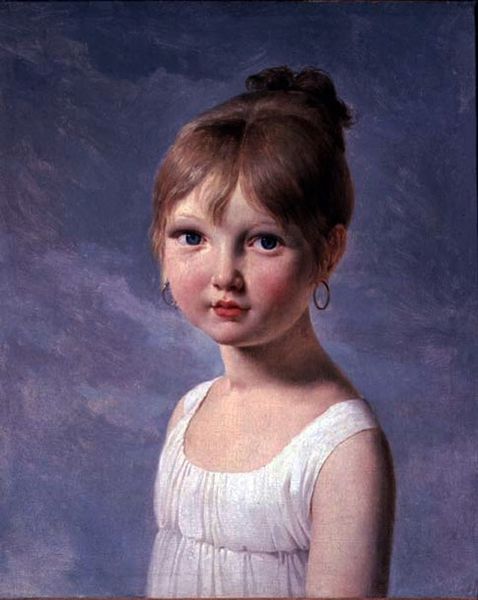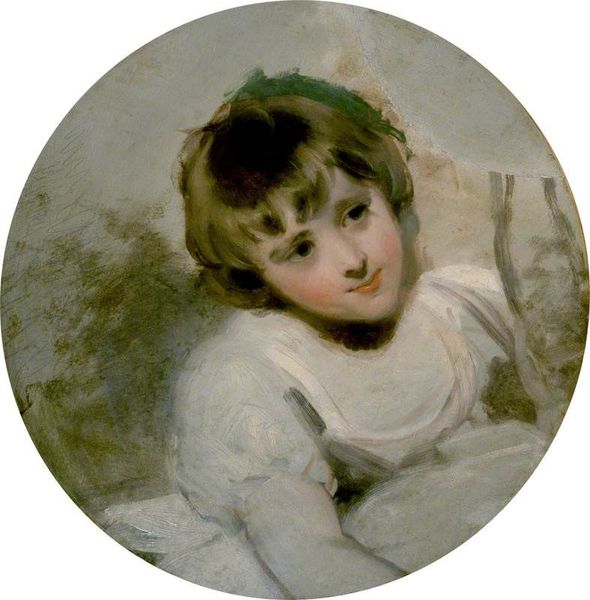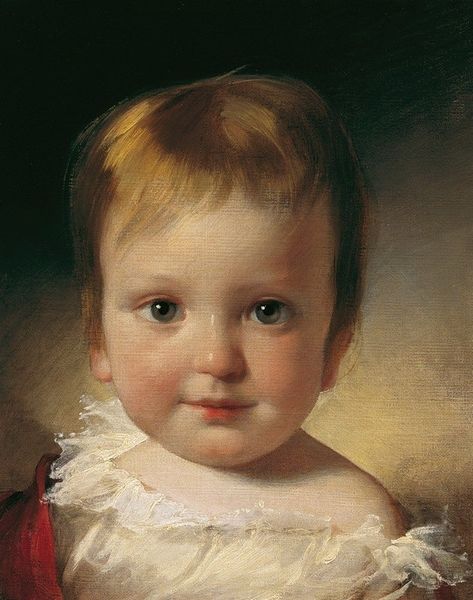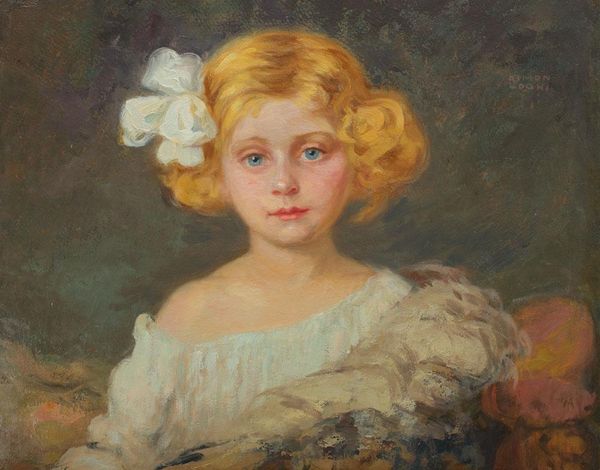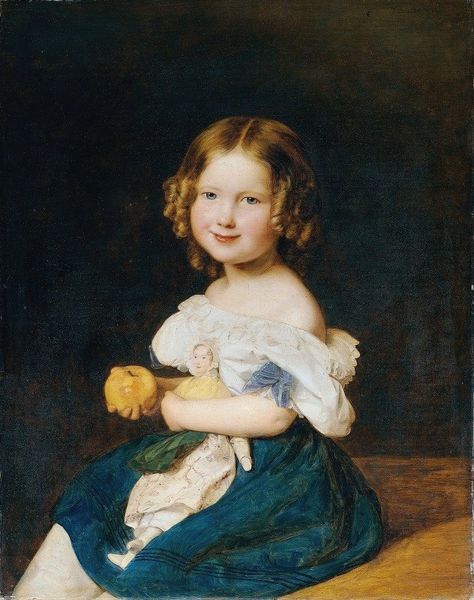
painting
#
portrait
#
figurative
#
painting
#
romanticism
#
genre-painting
Copyright: Public Domain: Artvee
Editor: Waldmüller’s “Girl Behind a Green Curtain” is quite striking. There’s an immediate intimacy to it, like we’re sharing a secret glance with this child. The detail is incredible, particularly in the rendering of the fabric. How would you interpret this image in its historical context? Curator: Considering Waldmüller was a prominent figure in the Biedermeier era, we see a fascination with domestic life and childhood. Think about the emerging middle class and their evolving values. How does this contrast to previous artistic eras? Editor: Well, compared to the grand history paintings favored before, this seems far more focused on private, personal experience. The Romantics also focused on the emotional aspect of reality, like Waldmüller does. But how would contemporaries perceive this so-called "genre painting"? Curator: Absolutely. Paintings like these shifted art's focus, becoming a social commentary through representation. We can also speculate about the subject - was she someone's daughter, highlighting emerging ideas of sentimental affection towards childhood, perhaps mirroring larger shifts in societal structure and its representation? This art became part of shaping, normalizing, and perpetuating cultural beliefs of the time. It raises questions on who is able to access to the painting at the time and later on, for how it might reflect access and power structures within the 19th-century European society. Do you notice any power dynamic created through her depiction? Editor: I suppose she is being put on display, literally behind the green curtain, made available to a new, wealthy audience. It feels so personal and detached all at once! I now wonder if its emotional appeal serves as something that’s simultaneously exploitative and sweet. Curator: Precisely. By understanding the social landscape, we can uncover not only the intention, but the work's role in constructing and reflecting values. We might see new complexity in Waldmüller's choice and the reception it encountered. Editor: This insight really shifts how I see this seemingly innocent painting. Thanks! Curator: Indeed, it's about considering how social forces shape not just the production, but the lasting impression of a work like this.
Comments
No comments
Be the first to comment and join the conversation on the ultimate creative platform.
